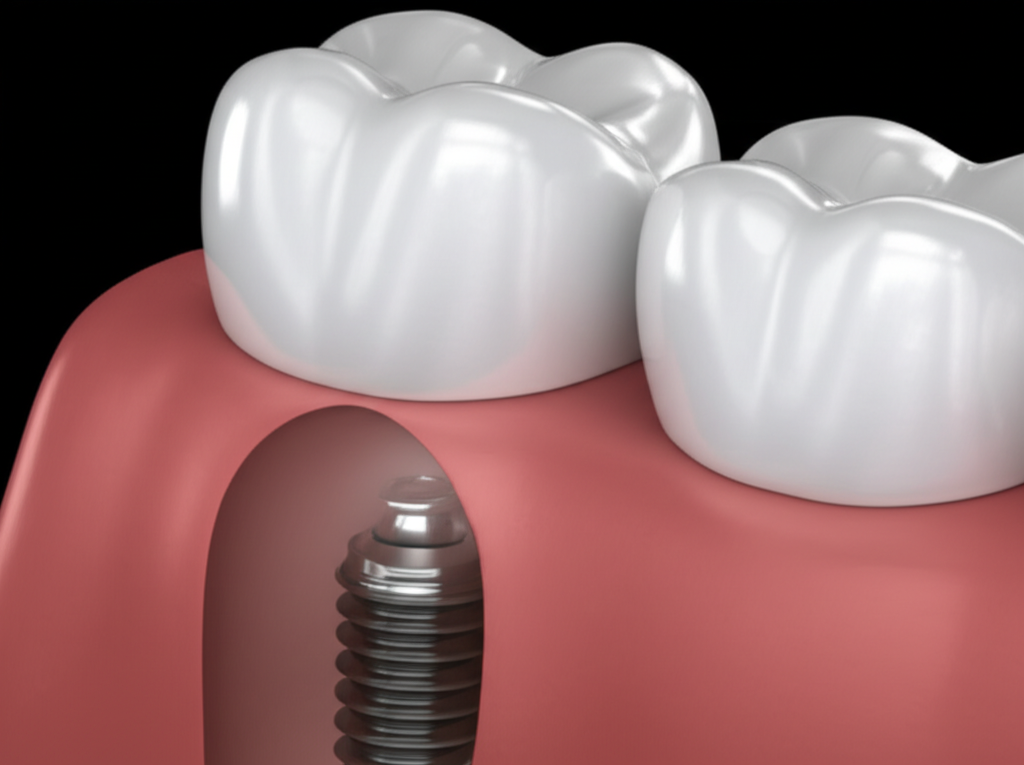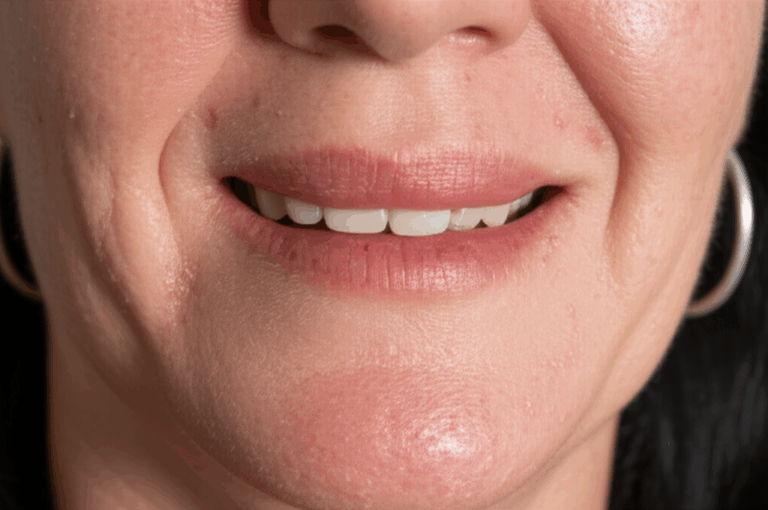
Dental Implant Failure Rates: What Are the Chances and How to Prevent It?
Table of Contents
Article Outline Overview
- Introduction: Personal experience with dental implants and success rates
- Explanation of early vs. late failure
- Actual statistics: how often do dental implants fail?
- Causes of failure (with practical insights)
- Key risk factors and personal risk assessment
- Recognizing signs of a failing implant
- What to do if an implant fails
- Prevention tips and advice for making it last
- Conclusion and encouragement
Introduction: My Journey with Dental Implants and What I’ve Learned
When I first thought about dental implants, to be honest, I was pretty nervous. Like anyone getting ready for surgery, I had questions: “Will it last?” “What if it fails?” “Am I making the right choice?” If you’ve asked yourself, “How often do dental implants fail?”—trust me, you’re not alone.
From my own experience and years of talking to others about tooth replacement, I’ve found that dental implants have some of the best success rates in dental care. But like any surgery, there is always a small risk. It’s important to keep that risk in the right perspective and learn what you can do to help make things go well.
In this guide, I’ll break down the real numbers, the main reasons why implants don’t work out, how to spot trouble early, and what you can do so your dental implant lasts as long as possible. I’ll also add some stories and tips from what I’ve seen along the way.
Early vs. Late Dental Implant Failure: What’s the Difference?
Just hearing the words “implant failure” can be scary. But not all failures are the same. Knowing when and why things can go wrong helps you be ready and act fast.
Early Dental Implant Failure
I remember a patient—let’s call him Dave—who came back worried just a few weeks after getting an implant. His big problem? Pain and swelling that just stuck around. Early failure usually happens within the first few weeks or months after surgery. The big reasons are:
- No Stability: The implant doesn’t really become part of the bone—a process called osseointegration.
- Infection: Germs get into the area where surgery was done.
- Bad Healing: Maybe the bone isn’t strong enough, or healing gets interrupted by smoking or not taking care of your mouth.
All these happen before the implant truly settles in.
Late Dental Implant Failure
Then there are implants that do fine for months, maybe years, then start causing trouble. I’ve seen late failures from things like:
- Peri-implantitis: Really just means swelling and infection around the implant, often because mouth care was missed.
- Mechanical Stress or Breakage: Chewing on tough stuff or grinding your teeth all the time can crack or shake things loose.
- Losing Bone or Health Changes: Sometimes, it’s changes in your own body that cause trouble, like bone shrinking with age or other health problems.
Both types are pretty rare compared to how often dental implants work out, but knowing the difference is important for quick fixes.
How Often Do Dental Implants Fail? The Numbers and What They Mean
Let’s get right to what people want most: “What’s my chance that this doesn’t work out?” It’s a smart question, and I’ll share what research says—not just my opinion.
Global Success Rates
I’ve checked lots of studies from all over, and the numbers are pretty clear:
- Five-Year Success Rate: 95–98%
- Ten-Year Success Rate: 90–95%
- Twenty-Year Survival: 85–90%
So the chances are really good, and most people keep their implant for decades without problems.
For early failures (before the bone and implant join), rates are around 1–5%. Late failures (after it’s healed) are even lower, about 2–5% over many years.
Here’s a table with the stats I usually share with my patients:
| Period After Placement | Success Rate | Failure Rate |
|---|---|---|
| 1–5 years | 95%+ | 1–5% |
| 6–10 years | 90–95% | 5–10% (mostly late failures) |
| 20+ years | 85–90% | A bit higher but still great |
But—like with all health numbers—there’s more to the story. You don’t want to be one of those small stats, right? Let’s see what makes the difference.
What Influences Success Rates?
- Where the Implant Is: The bottom jaw usually has stronger bone, so it does even better (over 97%). Top jaw, with softer bone, is still good (90–95%).
- Bone Grafting: Implants put in grafted bone work really well but sometimes just a little less than those in natural bone.
- Bone Quality: Just like building a strong house, a good foundation (bone) is key.
- Dentist’s Experience: Over and over, I see that picking an expert really makes a difference. One of the best things you can do? Work with a dentist who uses a top-notch implant dental laboratory.
- Your Health: Your own health also plays a big part. I’ll explain more next.
Main Causes of Dental Implant Failure Based on My Experience
Knowing why implants fail puts you in control. I see some reasons come up again and again. Here’s how it happens, even with today’s tools.
Biological Failures
Osseointegration Failure:
This is the main early reason things go wrong. The bone just doesn’t grow into the implant. Sometimes there isn’t enough healthy bone, or problems like smoking, diabetes, or immune issues get in the way.
For example, I once treated a woman in her 60s who had osteoporosis and was on medicine that slowed down bone growth. We needed to do a bone graft first, and that made everything work much better.
Peri-Implantitis:
This shows up months or even years after it seemed fine. It means infection and swelling happen around the implant, usually because brushing and flossing stopped or gum problems were ignored.
General Infection:
Any surgery has a slight risk of infection. Sometimes patients come back with swelling or strange ooze (pus), and catching it early always helped them improve.
Mechanical Failures
Dental implants are strong, but not unbreakable. Some common problems I’ve seen:
- Implant Breaks: Rare now with new materials, but too much pressure or a design that doesn’t fit your bite can do it.
- Abutment or Screw Issues: The abutment is what hooks the implant to the crown. If it comes loose or breaks, the tooth can feel wrong. Using good parts from a trusted crown and bridge lab helps avoid this.
- Crown Problems: Sometimes, the fake tooth on top gets loose or cracks, usually if made with poor materials.
Surgical & Planning Errors
Dentistry has come a long way. It’s not common, but mistakes can happen:
- Bad Placement: Wrong angle or too deep can cause pain or looseness. 3D scans help a lot here.
- Not Enough Bone or Missed Problems: If there’s not enough bone or a hidden infection, things can fail. Double-checking with X-rays really matters.
- Nerve or Sinus Injury: Doesn’t happen much now but picking someone skilled helps you avoid all this.
Risk Factors That Stack the Odds Against You
You might wonder, “Does this mean I’m at higher risk?” Most people are good candidates, but some things matter more—and you can control more than you think.
Patient-Related Factors
Here are the usual issues I see:
- Smoking: Number one risk. Smokers have up to 3 times the failure. It slows healing. I worked with someone who quit smoking before his implant—he did way better than those who didn’t.
- Uncontrolled Diabetes: If your blood sugar is high, you heal slower, so it’s easier for germs to get in.
- Bad Mouth Care/Gum Disease: If you don’t brush, floss, or see the dentist, problems can show up at any stage.
- Medical Conditions or Meds: Some medicines for osteoporosis and immune diseases slow bone healing. It doesn’t always mean you can’t have an implant, but give your dentist your full health story.
- Bruxism: This means grinding your teeth. Night after night, it beats the implant down. I always recommend a safe night guard from a night guard dental lab if this is your problem.
- Drinking a Lot: Too much alcohol makes healing slower and increases infection.
Dental Professional & Implant-Related Factors
Now, here are things you can pick:
- Dentist’s Skill: Experience and special training help you dodge lots of problems. Specialists who work with the best labs and materials avoid most issues before they happen.
- Implant Material & Design: Good materials like titanium or modern ceramic have great track records. Cheap knock-offs or old models—skip them.
- Good Planning: Always get the right scans (like CT scans) to check the bone, nerves, and sinuses. Don’t skip this part.
How Can You Spot a Failing Dental Implant?
Spotting a problem early can mean a small fix instead of bigger surgery. Here’s what I tell everyone to watch for:
Ongoing Pain:
A bit of ache after surgery is normal, but hurting weeks or months later needs a check.
Swelling or Redness:
If your gums are puffy or red and it doesn’t go away, pay attention.
Pus or Discharge:
If you see pus or anything weird coming out around the implant, that’s a warning sign.
Loose or Wiggly Implant:
An implant should feel like your own teeth. If it moves, go in right away.
Gums Shrinking Back:
If you see more of the metal or more of the crown showing, or gums moving away, that’s a signal.
Trouble Chewing/Speaking:
If it hurts or chewing/talking feels strange, don’t ignore it.
If a Dental Implant Fails: What Should You Expect?
Nobody wants this, but if it happens, it’s not the end. I’ve helped many people fix things and move forward.
Diagnosing the Problem
First, your dentist checks what’s happening. This might mean X-rays, scans, or just looking to see if parts are loose, infected, or if the bone is a problem. Sometimes, it’s a quick fix—sometimes, it takes more time.
Treatment or Next Steps
Depending on what’s wrong, you might need:
- No Surgery Needed: Early infections or swelling can sometimes heal with a cleaning, medicine, and better brushing.
- Surgery: If there’s a lot of bone loss or infection, a small surgery might be next.
- Remove & Try Again: Sometimes, the only way is to take the implant out, let it heal (often with a bone graft), and then put in a fresh implant.
- Different Kind of Tooth Replacement: Not everyone can get a new implant right away. Sometimes, a bridge, partial denture, or special custom fix from a good digital dental lab is the best stop for now.
I always push for clear talks—knowing your options makes things easier and gives you hope to get back your smile.
How to Get the Best Possible Results from Dental Implants
Here’s the truth: most problems can be stopped—or made a lot less likely—with the right steps. From what I’ve seen, here’s what really helps:
- Pick the Right Team: Go for an expert dentist who uses a trusted implant dental laboratory. Quality crowns and parts matter!
- Keep Your Mouth Clean: Brush, floss, use tools to clean between teeth, and see your dentist for cleaning.
- Kick Bad Habits: If you smoke, quitting even before your surgery helps your chances big time.
- Manage Health Problems: Take care of diabetes, bone loss, and immune conditions. Tell your dentist about every medicine and health problem.
- Use a Night Guard If You Grind: If you grind your teeth at night, get a safe, custom night guard to protect your new tooth.
- Watch for Trouble: Any pain, swelling, strange feeling—call your dentist fast.
- Go for Checkups: See the dentist every few months first, then twice a year for checkups.
And if you want general clean teeth tips, these teeth health tips are handy for implants too.
Final Thoughts: Why I Still Recommend (and Trust!) Dental Implants
Looking back, I’m thankful for what I’ve learned from my journey with dental implants—both as a patient and as someone helping others. I won’t pretend there’s no risk. But the odds are on your side, especially if you look after yourself and choose a good team.
I trust dental implants because, again and again, I’ve seen them bring back smiles, allow people to chew and eat well, and build up confidence in folks who once thought they’d never be happy with their teeth again.
If you’re worried or unsure, know that being informed is your best tool. Dental implants aren’t perfect, but with some good choices and care, you’re set up for success. For me, that’s worth it.
If you want to learn about today’s materials, lab work, or ways to keep your smile stronger for longer, you can look into current dental ceramics lab options or everyday dental care routines for a healthy mouth.








